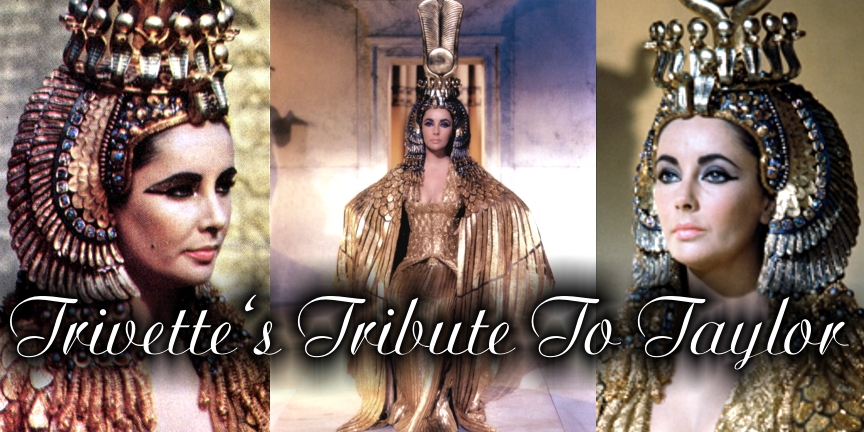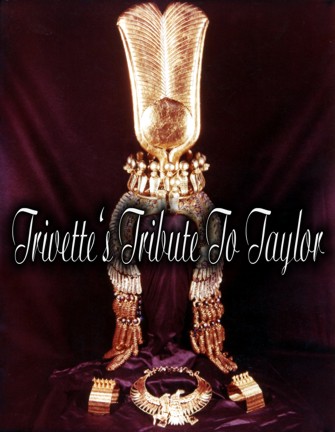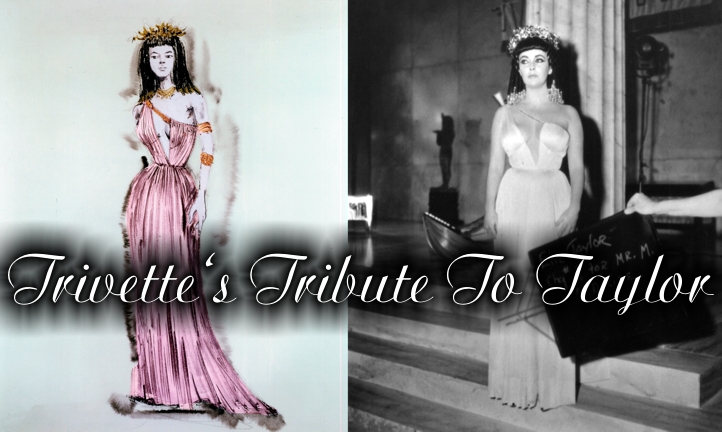
 Costume
17, Cleopatra's entrance into Rome
Irene Sharaff with,
undoubtedly, her most famous creation.
Costume
17, Cleopatra's entrance into Rome
Irene Sharaff with,
undoubtedly, her most famous creation.
Costume18, Caesarion's
nursery
One of the actual seamstresses
for Taylor's costumes can be seen in the middle photo, below.
Costume 19, Cleopatra
poses for her statue, Titus begs to be released
Costume 20, Cleopatra
hosts the Roman Senate
Costume 21, "Take a
little, then a little more"
Costume 22, the Ides
of March, Caesar's assassination
Costume 23, Cleopatra
leaves Rome
Costume 24, an offering
to Caesar, building Cleopatra's mausoleum
Costume? Water!
Costume 25, Cleopatra
enters Tarsus (not used)
The wig below, intended
for this unused costume, was used
instead in "The Argument"
scene for costume 33 lower on this page.
Costume 26, Cleopatra
enters Tarsus
Costume 27, Banquet
on the barge
Costume 28, Antony's
angst
Caesarion's duel, "Tickle
me" (not used)
Costume 29, Caesarion's
duel, "Tickle me"
Costume 30, Antony's
procrastination, Cleopatra sends Antony to Rome
Costume 31, Cleopatra
learns of Antony's marriage, Cleopatra's heartbreak
Costume 32, Cleopatra
receives Antony after his marriage, "On your knees!"
Costume 33, in Cleopatra's
mausoleum
Costume 34, the argument
Costume 35, "Love is
my Master"
Here is another example
of a design intended for a scene that was never written for the version
of
the film that was shot.
And, another example that indicates Sharaff must
have used the Pinewood script
as
a basis for at least some of her designs. There is a "strip dice" sequence
in the Pinewood script, but it
takes
place in the dining hall of the palace - not a "brothel" as indicated by
the notations. But, there were
many
versions of the Pinewood script. The version in the Trivette Collection,
written by Nigel Balchin,
and
dated June 10, 1959, may have been an earlier version than the one
available to Sharaff.
Cinecittà
Costumes
page 3





























